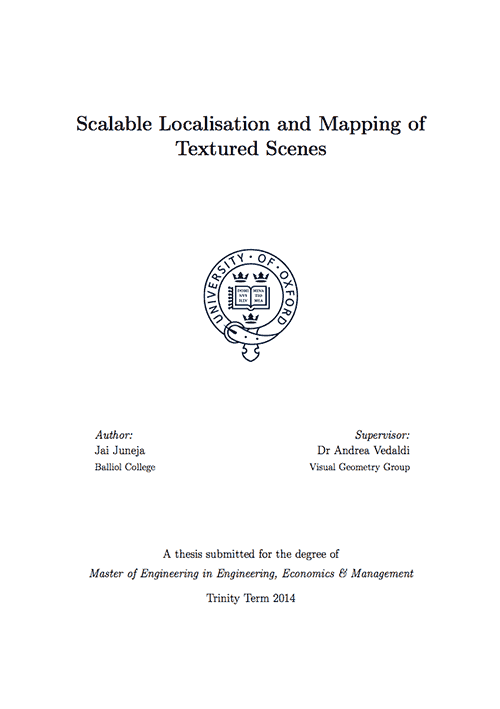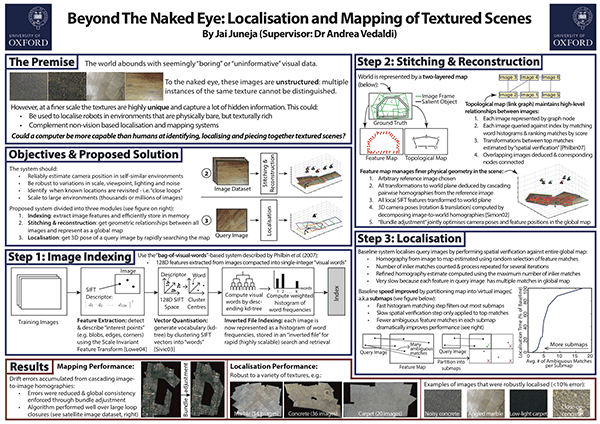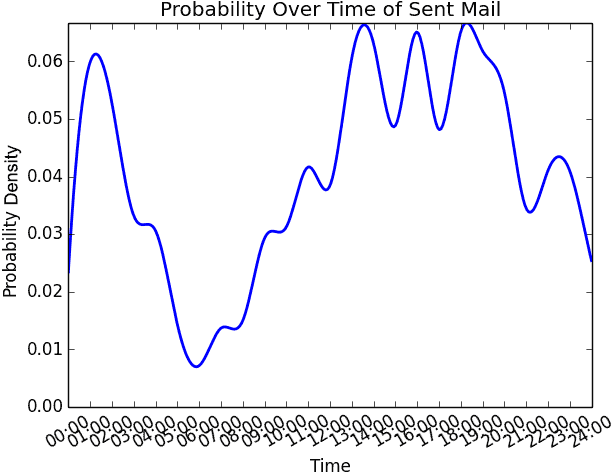Term,/r/funny,/r/pics,/r/AskReddit,/r/todayilearned,/r/worldnews,/r/science,/r/blog,/r/IAmA,/r/videos,/r/gaming,/r/movies,/r/Music,/r/aww,/r/technology,/r/bestof,/r/WTF,/r/AdviceAnimals,/r/news,/r/gifs,/r/askscience,/r/books,/r/television,/r/politics,/r/explainlikeimfive,/r/EarthPorn
repost,100,0,0,0,0,0,0,0,0,0,0,0,0,0,0,0,0,0,0,0,0,0,0,0,0
watermelon,25,0,0,0,0,0,0,0,0,0,0,0,0,0,0,0,0,0,0,0,0,0,0,0,0
corvallis,13,0,0,0,0,0,0,0,0,0,0,0,0,0,0,0,0,0,0,0,0,0,0,0,0
svedka,10,0,0,0,0,0,0,0,0,0,0,0,0,0,0,0,0,0,0,0,0,0,0,0,0
noodles,9,0,0,0,0,0,0,0,0,0,0,0,0,0,0,0,0,0,0,0,0,0,0,0,0
buca,9,0,0,0,0,0,0,0,0,0,0,0,0,0,0,0,0,0,0,0,0,0,0,0,0
friendzone,9,0,0,0,0,0,0,0,0,0,0,0,0,0,0,0,0,0,0,0,0,0,0,0,0
prosecutor,8,0,0,0,0,0,0,0,0,0,0,0,0,0,0,0,0,0,0,0,0,0,0,0,0
crip,8,0,0,0,0,0,0,0,0,0,0,0,0,0,0,0,0,0,0,0,0,0,0,0,0
klondike,8,0,0,0,0,0,0,0,0,0,0,0,0,0,0,0,0,0,0,0,0,0,0,0,0
suresh,8,0,0,0,0,0,0,0,0,0,0,0,0,0,0,0,0,0,0,0,0,0,0,0,0
adeem,8,0,0,0,0,0,0,0,0,0,0,0,0,0,0,0,0,0,0,0,0,0,0,0,0
goldblum,7,0,0,0,0,0,0,0,0,0,0,0,0,0,0,0,0,0,0,0,0,0,0,0,0
sandler,7,0,0,0,0,0,0,0,0,0,0,0,0,0,0,0,0,0,0,0,0,0,0,0,0
saandlaar,7,0,0,0,0,0,0,0,0,0,0,0,0,0,0,0,0,0,0,0,0,0,0,0,0
1yr,6,0,0,0,0,0,0,0,0,0,0,0,0,0,0,0,0,0,0,0,0,0,0,0,0
ragdoll,6,0,0,0,0,0,0,0,0,0,0,0,0,0,0,0,0,0,0,0,0,0,0,0,0
sikh,6,0,0,0,0,0,0,0,0,0,0,0,0,0,0,0,0,0,0,0,0,0,0,0,0
indictment,6,0,0,0,0,0,0,0,0,0,0,0,0,0,0,0,0,0,0,0,0,0,0,0,0
jeff,6,0,0,0,0,0,0,0,0,0,0,0,0,0,0,0,0,0,0,0,0,0,0,0,0
transvestite,6,0,0,0,0,0,0,0,0,0,0,0,0,0,0,0,0,0,0,0,0,0,0,0,0
watermelons,5,0,0,0,0,0,0,0,0,0,0,0,0,0,0,0,0,0,0,0,0,0,0,0,0
sikhs,5,0,0,0,0,0,0,0,0,0,0,0,0,0,0,0,0,0,0,0,0,0,0,0,0
thailand,5,0,0,0,0,0,0,0,0,0,0,0,0,0,0,0,0,0,0,0,0,0,0,0,0
karmadecay.com,5,0,0,0,0,0,0,0,0,0,0,0,0,0,0,0,0,0,0,0,0,0,0,0,0
duhduh,5,0,0,0,0,0,0,0,0,0,0,0,0,0,0,0,0,0,0,0,0,0,0,0,0
beppo,5,0,0,0,0,0,0,0,0,0,0,0,0,0,0,0,0,0,0,0,0,0,0,0,0
bucca,5,0,0,0,0,0,0,0,0,0,0,0,0,0,0,0,0,0,0,0,0,0,0,0,0
bayeux,5,0,0,0,0,0,0,0,0,0,0,0,0,0,0,0,0,0,0,0,0,0,0,0,0
eastwood,0,100,0,0,0,0,0,0,0,0,0,0,0,0,0,0,0,0,0,0,0,0,0,0,0
clams,0,93,0,0,0,0,0,0,0,0,0,0,0,0,0,0,0,0,0,0,0,0,0,0,0
clam,0,85,0,0,0,0,0,0,0,0,0,0,0,0,0,0,0,0,0,0,0,0,0,0,0
kayla,0,81,0,0,0,0,0,0,0,0,0,0,0,0,0,0,0,0,0,0,0,0,0,0,0
pearls,0,70,0,0,0,0,0,0,0,0,0,0,0,0,0,0,0,0,0,0,0,0,0,0,0
jackman,0,69,0,0,0,0,0,0,0,0,0,0,0,0,0,0,0,0,0,0,0,0,0,0,0
clint,0,64,0,0,0,0,0,0,0,0,0,0,0,0,0,0,0,0,0,0,0,0,0,0,0
wurd,0,59,0,0,0,0,0,0,0,0,0,0,0,0,0,0,0,0,0,0,0,0,0,0,0
bulbasaur,0,52,0,0,0,0,0,0,0,0,0,0,0,0,0,0,0,0,0,0,0,0,0,0,0
minesweeper,0,48,0,0,0,0,0,0,0,0,0,0,0,0,0,0,0,0,0,0,0,0,0,0,0
entente,0,48,0,0,0,0,0,0,0,0,0,0,0,0,0,0,0,0,0,0,0,0,0,0,0
buffs,0,42,0,0,0,0,0,0,0,0,0,0,0,0,0,0,0,0,0,0,0,0,0,0,0
sapphires,0,41,0,0,0,0,0,0,0,0,0,0,0,0,0,0,0,0,0,0,0,0,0,0,0
merritt,0,41,0,0,0,0,0,0,0,0,0,0,0,0,0,0,0,0,0,0,0,0,0,0,0
dui,0,40,0,0,0,0,0,0,0,0,0,0,0,0,0,0,0,0,0,0,0,0,0,0,0
rafts,0,37,0,0,0,0,0,0,0,0,0,0,0,0,0,0,0,0,0,0,0,0,0,0,0
welcom,0,37,0,0,0,0,0,0,0,0,0,0,0,0,0,0,0,0,0,0,0,0,0,0,0
oysters,0,35,0,0,0,0,0,0,0,0,0,0,0,0,0,0,0,0,0,0,0,0,0,0,0
hugh,0,34,0,0,0,0,0,0,0,0,0,0,0,0,0,0,0,0,0,0,0,0,0,0,0
feta,0,33,0,0,0,0,0,0,0,0,0,0,0,0,0,0,0,0,0,0,0,0,0,0,0
barreled,0,32,0,0,0,0,0,0,0,0,0,0,0,0,0,0,0,0,0,0,0,0,0,0,0
rammstein,0,30,0,0,0,0,0,0,0,0,0,0,0,0,0,0,0,0,0,0,0,0,0,0,0
watermelon,0,30,0,0,0,0,0,0,0,0,0,0,0,0,0,0,0,0,0,0,0,0,0,0,0
1yr,0,30,0,0,0,0,0,0,0,0,0,0,0,0,0,0,0,0,0,0,0,0,0,0,0
namaste,0,29,0,0,0,0,0,0,0,0,0,0,0,0,0,0,0,0,0,0,0,0,0,0,0
maldives,0,29,0,0,0,0,0,0,0,0,0,0,0,0,0,0,0,0,0,0,0,0,0,0,0
marcos,0,28,0,0,0,0,0,0,0,0,0,0,0,0,0,0,0,0,0,0,0,0,0,0,0
widows,0,27,0,0,0,0,0,0,0,0,0,0,0,0,0,0,0,0,0,0,0,0,0,0,0
karmadecay.com,0,26,0,0,0,0,0,0,0,0,0,0,0,0,0,0,0,0,0,0,0,0,0,0,0
rwc,0,26,0,0,0,0,0,0,0,0,0,0,0,0,0,0,0,0,0,0,0,0,0,0,0
daycare,0,0,100,0,0,0,0,0,0,0,0,0,0,0,0,0,0,0,0,0,0,0,0,0,0
orgy,0,0,76,0,0,0,0,0,0,0,0,0,0,0,0,0,0,0,0,0,0,0,0,0,0
powerlisting.wikia.com,0,0,51,0,0,0,0,0,0,0,0,0,0,0,0,0,0,0,0,0,0,0,0,0,0
pineapples,0,0,46,0,0,0,0,0,0,0,0,0,0,0,0,0,0,0,0,0,0,0,0,0,0
ustream.tv,0,0,43,0,0,0,0,0,0,0,0,0,0,0,0,0,0,0,0,0,0,0,0,0,0
cursive,0,0,40,0,0,0,0,0,0,0,0,0,0,0,0,0,0,0,0,0,0,0,0,0,0
worksheets,0,0,37,0,0,0,0,0,0,0,0,0,0,0,0,0,0,0,0,0,0,0,0,0,0
cst,0,0,35,0,0,0,0,0,0,0,0,0,0,0,0,0,0,0,0,0,0,0,0,0,0
daycares,0,0,30,0,0,0,0,0,0,0,0,0,0,0,0,0,0,0,0,0,0,0,0,0,0
orgies,0,0,30,0,0,0,0,0,0,0,0,0,0,0,0,0,0,0,0,0,0,0,0,0,0
threesome,0,0,30,0,0,0,0,0,0,0,0,0,0,0,0,0,0,0,0,0,0,0,0,0,0
flexo,0,0,29,0,0,0,0,0,0,0,0,0,0,0,0,0,0,0,0,0,0,0,0,0,0
borat,0,0,26,0,0,0,0,0,0,0,0,0,0,0,0,0,0,0,0,0,0,0,0,0,0
preschool,0,0,26,0,0,0,0,0,0,0,0,0,0,0,0,0,0,0,0,0,0,0,0,0,0
tong,0,0,25,0,0,0,0,0,0,0,0,0,0,0,0,0,0,0,0,0,0,0,0,0,0
flaca,0,0,25,0,0,0,0,0,0,0,0,0,0,0,0,0,0,0,0,0,0,0,0,0,0
goofus,0,0,25,0,0,0,0,0,0,0,0,0,0,0,0,0,0,0,0,0,0,0,0,0,0
moist,0,0,23,0,0,0,0,0,0,0,0,0,0,0,0,0,0,0,0,0,0,0,0,0,0
cunt,0,0,23,0,0,0,0,0,0,0,0,0,0,0,0,0,0,0,0,0,0,0,0,0,0
dementia,0,0,22,0,0,0,0,0,0,0,0,0,0,0,0,0,0,0,0,0,0,0,0,0,0
muffins,0,0,22,0,0,0,0,0,0,0,0,0,0,0,0,0,0,0,0,0,0,0,0,0,0
bassemmasri,0,0,21,0,0,0,0,0,0,0,0,0,0,0,0,0,0,0,0,0,0,0,0,0,0
notepad,0,0,21,0,0,0,0,0,0,0,0,0,0,0,0,0,0,0,0,0,0,0,0,0,0
rhombus,0,0,21,0,0,0,0,0,0,0,0,0,0,0,0,0,0,0,0,0,0,0,0,0,0
gallant,0,0,21,0,0,0,0,0,0,0,0,0,0,0,0,0,0,0,0,0,0,0,0,0,0
sauron,0,0,21,0,0,0,0,0,0,0,0,0,0,0,0,0,0,0,0,0,0,0,0,0,0
tuna,0,0,21,0,0,0,0,0,0,0,0,0,0,0,0,0,0,0,0,0,0,0,0,0,0
duolingo,0,0,20,0,0,0,0,0,0,0,0,0,0,0,0,0,0,0,0,0,0,0,0,0,0
ustream,0,0,20,0,0,0,0,0,0,0,0,0,0,0,0,0,0,0,0,0,0,0,0,0,0
herpes,0,0,0,100,0,0,0,0,0,0,0,0,0,0,0,0,0,0,0,0,0,0,0,0,0
hsv,0,0,0,69,0,0,0,0,0,0,0,0,0,0,0,0,0,0,0,0,0,0,0,0,0
sores,0,0,0,55,0,0,0,0,0,0,0,0,0,0,0,0,0,0,0,0,0,0,0,0,0
nutella,0,0,0,48,0,0,0,0,0,0,0,0,0,0,0,0,0,0,0,0,0,0,0,0,0
hsv1,0,0,0,43,0,0,0,0,0,0,0,0,0,0,0,0,0,0,0,0,0,0,0,0,0
hazelnuts,0,0,0,41,0,0,0,0,0,0,0,0,0,0,0,0,0,0,0,0,0,0,0,0,0
uday,0,0,0,38,0,0,0,0,0,0,0,0,0,0,0,0,0,0,0,0,0,0,0,0,0
bielefeld,0,0,0,37,0,0,0,0,0,0,0,0,0,0,0,0,0,0,0,0,0,0,0,0,0
circumcision,0,0,0,35,0,0,0,0,0,0,0,0,0,0,0,0,0,0,0,0,0,0,0,0,0
ritz,0,0,0,34,0,0,0,0,0,0,0,0,0,0,0,0,0,0,0,0,0,0,0,0,0
zakat,0,0,0,33,0,0,0,0,0,0,0,0,0,0,0,0,0,0,0,0,0,0,0,0,0
hsv2,0,0,0,33,0,0,0,0,0,0,0,0,0,0,0,0,0,0,0,0,0,0,0,0,0
baboons,0,0,0,31,0,0,0,0,0,0,0,0,0,0,0,0,0,0,0,0,0,0,0,0,0
krampus,0,0,0,30,0,0,0,0,0,0,0,0,0,0,0,0,0,0,0,0,0,0,0,0,0
canoe,0,0,0,30,0,0,0,0,0,0,0,0,0,0,0,0,0,0,0,0,0,0,0,0,0
overmorrow,0,0,0,29,0,0,0,0,0,0,0,0,0,0,0,0,0,0,0,0,0,0,0,0,0
genital,0,0,0,28,0,0,0,0,0,0,0,0,0,0,0,0,0,0,0,0,0,0,0,0,0
ferrero,0,0,0,28,0,0,0,0,0,0,0,0,0,0,0,0,0,0,0,0,0,0,0,0,0
juries,0,0,0,25,0,0,0,0,0,0,0,0,0,0,0,0,0,0,0,0,0,0,0,0,0
butterflies,0,0,0,24,0,0,0,0,0,0,0,0,0,0,0,0,0,0,0,0,0,0,0,0,0
baboon,0,0,0,24,0,0,0,0,0,0,0,0,0,0,0,0,0,0,0,0,0,0,0,0,0
pluto,0,0,0,22,0,0,0,0,0,0,0,0,0,0,0,0,0,0,0,0,0,0,0,0,0
ernie,0,0,0,21,0,0,0,0,0,0,0,0,0,0,0,0,0,0,0,0,0,0,0,0,0
hazelnut,0,0,0,21,0,0,0,0,0,0,0,0,0,0,0,0,0,0,0,0,0,0,0,0,0
kirkman,0,0,0,20,0,0,0,0,0,0,0,0,0,0,0,0,0,0,0,0,0,0,0,0,0
reindeer,0,0,0,20,0,0,0,0,0,0,0,0,0,0,0,0,0,0,0,0,0,0,0,0,0
rockall,0,0,0,19,0,0,0,0,0,0,0,0,0,0,0,0,0,0,0,0,0,0,0,0,0
canker,0,0,0,19,0,0,0,0,0,0,0,0,0,0,0,0,0,0,0,0,0,0,0,0,0
cheech,0,0,0,19,0,0,0,0,0,0,0,0,0,0,0,0,0,0,0,0,0,0,0,0,0
israel,0,0,0,0,100,0,0,0,0,0,0,0,0,0,0,0,0,0,0,0,0,0,0,0,0
palestinian,0,0,0,0,97,0,0,0,0,0,0,0,0,0,0,0,0,0,0,0,0,0,0,0,0
bitofnewsbot,0,0,0,0,79,0,0,0,0,0,0,0,0,0,0,0,0,0,0,0,0,0,0,0,0
bitofnews.com,0,0,0,0,79,0,0,0,0,0,0,0,0,0,0,0,0,0,0,0,0,0,0,0,0
palestinians,0,0,0,0,73,0,0,0,0,0,0,0,0,0,0,0,0,0,0,0,0,0,0,0,0
crimea,0,0,0,0,69,0,0,0,0,0,0,0,0,0,0,0,0,0,0,0,0,0,0,0,0
ukraine,0,0,0,0,69,0,0,0,0,0,0,0,0,0,0,0,0,0,0,0,0,0,0,0,0
qatar,0,0,0,0,67,0,0,0,0,0,0,0,0,0,0,0,0,0,0,0,0,0,0,0,0
graphene,0,0,0,0,63,0,0,0,0,0,0,0,0,0,0,0,0,0,0,0,0,0,0,0,0
hamas,0,0,0,0,59,0,0,0,0,0,0,0,0,0,0,0,0,0,0,0,0,0,0,0,0
nato,0,0,0,0,54,0,0,0,0,0,0,0,0,0,0,0,0,0,0,0,0,0,0,0,0
circumcision,0,0,0,0,50,0,0,0,0,0,0,0,0,0,0,0,0,0,0,0,0,0,0,0,0
kiev,0,0,0,0,49,0,0,0,0,0,0,0,0,0,0,0,0,0,0,0,0,0,0,0,0
polio,0,0,0,0,47,0,0,0,0,0,0,0,0,0,0,0,0,0,0,0,0,0,0,0,0
israeli,0,0,0,0,46,0,0,0,0,0,0,0,0,0,0,0,0,0,0,0,0,0,0,0,0
putin,0,0,0,0,43,0,0,0,0,0,0,0,0,0,0,0,0,0,0,0,0,0,0,0,0
israels,0,0,0,0,42,0,0,0,0,0,0,0,0,0,0,0,0,0,0,0,0,0,0,0,0
pakistani,0,0,0,0,42,0,0,0,0,0,0,0,0,0,0,0,0,0,0,0,0,0,0,0,0
gaza,0,0,0,0,40,0,0,0,0,0,0,0,0,0,0,0,0,0,0,0,0,0,0,0,0
palestine,0,0,0,0,40,0,0,0,0,0,0,0,0,0,0,0,0,0,0,0,0,0,0,0,0
news,0,0,0,0,39,0,0,0,0,0,0,0,0,0,0,0,0,0,0,0,0,0,0,0,0
pakistan,0,0,0,0,39,0,0,0,0,0,0,0,0,0,0,0,0,0,0,0,0,0,0,0,0
arabs,0,0,0,0,38,0,0,0,0,0,0,0,0,0,0,0,0,0,0,0,0,0,0,0,0
netanyahu,0,0,0,0,38,0,0,0,0,0,0,0,0,0,0,0,0,0,0,0,0,0,0,0,0
kurds,0,0,0,0,37,0,0,0,0,0,0,0,0,0,0,0,0,0,0,0,0,0,0,0,0
muslim,0,0,0,0,36,0,0,0,0,0,0,0,0,0,0,0,0,0,0,0,0,0,0,0,0
v2,0,0,0,0,36,0,0,0,0,0,0,0,0,0,0,0,0,0,0,0,0,0,0,0,0
quota,0,0,0,0,35,0,0,0,0,0,0,0,0,0,0,0,0,0,0,0,0,0,0,0,0
islamic,0,0,0,0,33,0,0,0,0,0,0,0,0,0,0,0,0,0,0,0,0,0,0,0,0
separatist,0,0,0,0,33,0,0,0,0,0,0,0,0,0,0,0,0,0,0,0,0,0,0,0,0
ebv,0,0,0,0,0,100,0,0,0,0,0,0,0,0,0,0,0,0,0,0,0,0,0,0,0
particle,0,0,0,0,0,30,0,0,0,0,0,0,0,0,0,0,0,0,0,0,0,0,0,0,0
quarks,0,0,0,0,0,30,0,0,0,0,0,0,0,0,0,0,0,0,0,0,0,0,0,0,0
genes,0,0,0,0,0,30,0,0,0,0,0,0,0,0,0,0,0,0,0,0,0,0,0,0,0
galaxies,0,0,0,0,0,29,0,0,0,0,0,0,0,0,0,0,0,0,0,0,0,0,0,0,0
lhc,0,0,0,0,0,29,0,0,0,0,0,0,0,0,0,0,0,0,0,0,0,0,0,0,0
tcs,0,0,0,0,0,28,0,0,0,0,0,0,0,0,0,0,0,0,0,0,0,0,0,0,0
triclosan,0,0,0,0,0,23,0,0,0,0,0,0,0,0,0,0,0,0,0,0,0,0,0,0,0
accelerators,0,0,0,0,0,22,0,0,0,0,0,0,0,0,0,0,0,0,0,0,0,0,0,0,0
genome,0,0,0,0,0,22,0,0,0,0,0,0,0,0,0,0,0,0,0,0,0,0,0,0,0
quark,0,0,0,0,0,20,0,0,0,0,0,0,0,0,0,0,0,0,0,0,0,0,0,0,0
mono,0,0,0,0,0,20,0,0,0,0,0,0,0,0,0,0,0,0,0,0,0,0,0,0,0
grandin,0,0,0,0,0,19,0,0,0,0,0,0,0,0,0,0,0,0,0,0,0,0,0,0,0
androgenic,0,0,0,0,0,19,0,0,0,0,0,0,0,0,0,0,0,0,0,0,0,0,0,0,0
dke,0,0,0,0,0,18,0,0,0,0,0,0,0,0,0,0,0,0,0,0,0,0,0,0,0
turmeric,0,0,0,0,0,18,0,0,0,0,0,0,0,0,0,0,0,0,0,0,0,0,0,0,0
dunning,0,0,0,0,0,17,0,0,0,0,0,0,0,0,0,0,0,0,0,0,0,0,0,0,0
bacteria,0,0,0,0,0,17,0,0,0,0,0,0,0,0,0,0,0,0,0,0,0,0,0,0,0
linkage,0,0,0,0,0,17,0,0,0,0,0,0,0,0,0,0,0,0,0,0,0,0,0,0,0
corporal,0,0,0,0,0,17,0,0,0,0,0,0,0,0,0,0,0,0,0,0,0,0,0,0,0
nicotine,0,0,0,0,0,15,0,0,0,0,0,0,0,0,0,0,0,0,0,0,0,0,0,0,0
slac,0,0,0,0,0,14,0,0,0,0,0,0,0,0,0,0,0,0,0,0,0,0,0,0,0
accelerator,0,0,0,0,0,14,0,0,0,0,0,0,0,0,0,0,0,0,0,0,0,0,0,0,0
concussion,0,0,0,0,0,14,0,0,0,0,0,0,0,0,0,0,0,0,0,0,0,0,0,0,0
co2,0,0,0,0,0,13,0,0,0,0,0,0,0,0,0,0,0,0,0,0,0,0,0,0,0
eeg,0,0,0,0,0,13,0,0,0,0,0,0,0,0,0,0,0,0,0,0,0,0,0,0,0
kruger,0,0,0,0,0,13,0,0,0,0,0,0,0,0,0,0,0,0,0,0,0,0,0,0,0
plasma,0,0,0,0,0,13,0,0,0,0,0,0,0,0,0,0,0,0,0,0,0,0,0,0,0
homosexuality,0,0,0,0,0,12,0,0,0,0,0,0,0,0,0,0,0,0,0,0,0,0,0,0,0
baryons,0,0,0,0,0,12,0,0,0,0,0,0,0,0,0,0,0,0,0,0,0,0,0,0,0
redditgifts,0,0,0,0,0,0,100,0,0,0,0,0,0,0,0,0,0,0,0,0,0,0,0,0,0
neutrality,0,0,0,0,0,0,96,0,0,0,0,0,0,0,0,0,0,0,0,0,0,0,0,0,0
reddit.tv,0,0,0,0,0,0,96,0,0,0,0,0,0,0,0,0,0,0,0,0,0,0,0,0,0
meetup,0,0,0,0,0,0,92,0,0,0,0,0,0,0,0,0,0,0,0,0,0,0,0,0,0
gifter,0,0,0,0,0,0,91,0,0,0,0,0,0,0,0,0,0,0,0,0,0,0,0,0,0
hygge,0,0,0,0,0,0,84,0,0,0,0,0,0,0,0,0,0,0,0,0,0,0,0,0,0
autowikibot,0,0,0,0,0,0,83,0,0,0,0,0,0,0,0,0,0,0,0,0,0,0,0,0,0
admins,0,0,0,0,0,0,82,0,0,0,0,0,0,0,0,0,0,0,0,0,0,0,0,0,0
fcc,0,0,0,0,0,0,80,0,0,0,0,0,0,0,0,0,0,0,0,0,0,0,0,0,0
rematcher,0,0,0,0,0,0,67,0,0,0,0,0,0,0,0,0,0,0,0,0,0,0,0,0,0
redditgifts.com,0,0,0,0,0,0,64,0,0,0,0,0,0,0,0,0,0,0,0,0,0,0,0,0,0
rematched,0,0,0,0,0,0,61,0,0,0,0,0,0,0,0,0,0,0,0,0,0,0,0,0,0
exchanges,0,0,0,0,0,0,61,0,0,0,0,0,0,0,0,0,0,0,0,0,0,0,0,0,0
amp009,0,0,0,0,0,0,60,0,0,0,0,0,0,0,0,0,0,0,0,0,0,0,0,0,0
yishan,0,0,0,0,0,0,58,0,0,0,0,0,0,0,0,0,0,0,0,0,0,0,0,0,0
rematch,0,0,0,0,0,0,57,0,0,0,0,0,0,0,0,0,0,0,0,0,0,0,0,0,0
giftee,0,0,0,0,0,0,56,0,0,0,0,0,0,0,0,0,0,0,0,0,0,0,0,0,0
np.reddit.com,0,0,0,0,0,0,54,0,0,0,0,0,0,0,0,0,0,0,0,0,0,0,0,0,0
snoo,0,0,0,0,0,0,49,0,0,0,0,0,0,0,0,0,0,0,0,0,0,0,0,0,0
cloudflare,0,0,0,0,0,0,48,0,0,0,0,0,0,0,0,0,0,0,0,0,0,0,0,0,0
pinwale,0,0,0,0,0,0,44,0,0,0,0,0,0,0,0,0,0,0,0,0,0,0,0,0,0
shafted,0,0,0,0,0,0,42,0,0,0,0,0,0,0,0,0,0,0,0,0,0,0,0,0,0
kn0thing,0,0,0,0,0,0,41,0,0,0,0,0,0,0,0,0,0,0,0,0,0,0,0,0,0
secretsanta,0,0,0,0,0,0,37,0,0,0,0,0,0,0,0,0,0,0,0,0,0,0,0,0,0
ssl.redditgifts.com,0,0,0,0,0,0,34,0,0,0,0,0,0,0,0,0,0,0,0,0,0,0,0,0,0
gifts,0,0,0,0,0,0,33,0,0,0,0,0,0,0,0,0,0,0,0,0,0,0,0,0,0
cdn,0,0,0,0,0,0,33,0,0,0,0,0,0,0,0,0,0,0,0,0,0,0,0,0,0
oban,0,0,0,0,0,0,32,0,0,0,0,0,0,0,0,0,0,0,0,0,0,0,0,0,0
lifeorg,0,0,0,0,0,0,32,0,0,0,0,0,0,0,0,0,0,0,0,0,0,0,0,0,0
iamarequests,0,0,0,0,0,0,0,100,0,0,0,0,0,0,0,0,0,0,0,0,0,0,0,0,0
philae,0,0,0,0,0,0,0,39,0,0,0,0,0,0,0,0,0,0,0,0,0,0,0,0,0
duolingo,0,0,0,0,0,0,0,38,0,0,0,0,0,0,0,0,0,0,0,0,0,0,0,0,0
zane,0,0,0,0,0,0,0,32,0,0,0,0,0,0,0,0,0,0,0,0,0,0,0,0,0
rosetta,0,0,0,0,0,0,0,30,0,0,0,0,0,0,0,0,0,0,0,0,0,0,0,0,0
evangeline,0,0,0,0,0,0,0,29,0,0,0,0,0,0,0,0,0,0,0,0,0,0,0,0,0
zumba,0,0,0,0,0,0,0,26,0,0,0,0,0,0,0,0,0,0,0,0,0,0,0,0,0
cfl,0,0,0,0,0,0,0,25,0,0,0,0,0,0,0,0,0,0,0,0,0,0,0,0,0
haida,0,0,0,0,0,0,0,24,0,0,0,0,0,0,0,0,0,0,0,0,0,0,0,0,0
keir,0,0,0,0,0,0,0,22,0,0,0,0,0,0,0,0,0,0,0,0,0,0,0,0,0
vivica,0,0,0,0,0,0,0,21,0,0,0,0,0,0,0,0,0,0,0,0,0,0,0,0,0
listen.tidalhifi.com,0,0,0,0,0,0,0,20,0,0,0,0,0,0,0,0,0,0,0,0,0,0,0,0,0
tory,0,0,0,0,0,0,0,18,0,0,0,0,0,0,0,0,0,0,0,0,0,0,0,0,0
rory,0,0,0,0,0,0,0,18,0,0,0,0,0,0,0,0,0,0,0,0,0,0,0,0,0
esa,0,0,0,0,0,0,0,18,0,0,0,0,0,0,0,0,0,0,0,0,0,0,0,0,0
kari,0,0,0,0,0,0,0,17,0,0,0,0,0,0,0,0,0,0,0,0,0,0,0,0,0
weezer,0,0,0,0,0,0,0,16,0,0,0,0,0,0,0,0,0,0,0,0,0,0,0,0,0
arranging,0,0,0,0,0,0,0,14,0,0,0,0,0,0,0,0,0,0,0,0,0,0,0,0,0
lossless,0,0,0,0,0,0,0,14,0,0,0,0,0,0,0,0,0,0,0,0,0,0,0,0,0
fcc,0,0,0,0,0,0,0,14,0,0,0,0,0,0,0,0,0,0,0,0,0,0,0,0,0
mst3k,0,0,0,0,0,0,0,14,0,0,0,0,0,0,0,0,0,0,0,0,0,0,0,0,0
wirecutter,0,0,0,0,0,0,0,13,0,0,0,0,0,0,0,0,0,0,0,0,0,0,0,0,0
comet,0,0,0,0,0,0,0,13,0,0,0,0,0,0,0,0,0,0,0,0,0,0,0,0,0
lander,0,0,0,0,0,0,0,12,0,0,0,0,0,0,0,0,0,0,0,0,0,0,0,0,0
ecoboost,0,0,0,0,0,0,0,12,0,0,0,0,0,0,0,0,0,0,0,0,0,0,0,0,0
kubrick,0,0,0,0,0,0,0,12,0,0,0,0,0,0,0,0,0,0,0,0,0,0,0,0,0
manga,0,0,0,0,0,0,0,11,0,0,0,0,0,0,0,0,0,0,0,0,0,0,0,0,0
milf,0,0,0,0,0,0,0,0,100,0,0,0,0,0,0,0,0,0,0,0,0,0,0,0,0
milfmilf,0,0,0,0,0,0,0,0,81,0,0,0,0,0,0,0,0,0,0,0,0,0,0,0,0
mxc,0,0,0,0,0,0,0,0,54,0,0,0,0,0,0,0,0,0,0,0,0,0,0,0,0
aztecs,0,0,0,0,0,0,0,0,54,0,0,0,0,0,0,0,0,0,0,0,0,0,0,0,0
00100000,0,0,0,0,0,0,0,0,51,0,0,0,0,0,0,0,0,0,0,0,0,0,0,0,0
vaders,0,0,0,0,0,0,0,0,51,0,0,0,0,0,0,0,0,0,0,0,0,0,0,0,0
csi,0,0,0,0,0,0,0,0,50,0,0,0,0,0,0,0,0,0,0,0,0,0,0,0,0
vader,0,0,0,0,0,0,0,0,48,0,0,0,0,0,0,0,0,0,0,0,0,0,0,0,0
midichlorians,0,0,0,0,0,0,0,0,41,0,0,0,0,0,0,0,0,0,0,0,0,0,0,0,0
01100101,0,0,0,0,0,0,0,0,40,0,0,0,0,0,0,0,0,0,0,0,0,0,0,0,0
shoplifting,0,0,0,0,0,0,0,0,39,0,0,0,0,0,0,0,0,0,0,0,0,0,0,0,0
higuain,0,0,0,0,0,0,0,0,37,0,0,0,0,0,0,0,0,0,0,0,0,0,0,0,0
berta,0,0,0,0,0,0,0,0,37,0,0,0,0,0,0,0,0,0,0,0,0,0,0,0,0
subsidies,0,0,0,0,0,0,0,0,35,0,0,0,0,0,0,0,0,0,0,0,0,0,0,0,0
sufi,0,0,0,0,0,0,0,0,31,0,0,0,0,0,0,0,0,0,0,0,0,0,0,0,0
lovejoy,0,0,0,0,0,0,0,0,31,0,0,0,0,0,0,0,0,0,0,0,0,0,0,0,0
hummus,0,0,0,0,0,0,0,0,31,0,0,0,0,0,0,0,0,0,0,0,0,0,0,0,0
solar,0,0,0,0,0,0,0,0,30,0,0,0,0,0,0,0,0,0,0,0,0,0,0,0,0
gonzalo,0,0,0,0,0,0,0,0,30,0,0,0,0,0,0,0,0,0,0,0,0,0,0,0,0
antiwhitereddit,0,0,0,0,0,0,0,0,30,0,0,0,0,0,0,0,0,0,0,0,0,0,0,0,0
fossil,0,0,0,0,0,0,0,0,29,0,0,0,0,0,0,0,0,0,0,0,0,0,0,0,0
pripyat,0,0,0,0,0,0,0,0,28,0,0,0,0,0,0,0,0,0,0,0,0,0,0,0,0
chechen,0,0,0,0,0,0,0,0,28,0,0,0,0,0,0,0,0,0,0,0,0,0,0,0,0
01110100,0,0,0,0,0,0,0,0,27,0,0,0,0,0,0,0,0,0,0,0,0,0,0,0,0
beluga,0,0,0,0,0,0,0,0,27,0,0,0,0,0,0,0,0,0,0,0,0,0,0,0,0
takeshis,0,0,0,0,0,0,0,0,27,0,0,0,0,0,0,0,0,0,0,0,0,0,0,0,0
wipeout,0,0,0,0,0,0,0,0,27,0,0,0,0,0,0,0,0,0,0,0,0,0,0,0,0
01110011,0,0,0,0,0,0,0,0,27,0,0,0,0,0,0,0,0,0,0,0,0,0,0,0,0
inciting,0,0,0,0,0,0,0,0,25,0,0,0,0,0,0,0,0,0,0,0,0,0,0,0,0
officer,0,0,0,0,0,0,0,0,24,0,0,0,0,0,0,0,0,0,0,0,0,0,0,0,0
ubisoft,0,0,0,0,0,0,0,0,0,100,0,0,0,0,0,0,0,0,0,0,0,0,0,0,0
dayz,0,0,0,0,0,0,0,0,0,94,0,0,0,0,0,0,0,0,0,0,0,0,0,0,0
borderlands,0,0,0,0,0,0,0,0,0,80,0,0,0,0,0,0,0,0,0,0,0,0,0,0,0
wii,0,0,0,0,0,0,0,0,0,77,0,0,0,0,0,0,0,0,0,0,0,0,0,0,0
3ds,0,0,0,0,0,0,0,0,0,70,0,0,0,0,0,0,0,0,0,0,0,0,0,0,0
dlc,0,0,0,0,0,0,0,0,0,66,0,0,0,0,0,0,0,0,0,0,0,0,0,0,0
controller,0,0,0,0,0,0,0,0,0,63,0,0,0,0,0,0,0,0,0,0,0,0,0,0,0
minesweeper,0,0,0,0,0,0,0,0,0,54,0,0,0,0,0,0,0,0,0,0,0,0,0,0,0
samus,0,0,0,0,0,0,0,0,0,51,0,0,0,0,0,0,0,0,0,0,0,0,0,0,0
cutscene,0,0,0,0,0,0,0,0,0,48,0,0,0,0,0,0,0,0,0,0,0,0,0,0,0
madcatz,0,0,0,0,0,0,0,0,0,46,0,0,0,0,0,0,0,0,0,0,0,0,0,0,0
arma,0,0,0,0,0,0,0,0,0,45,0,0,0,0,0,0,0,0,0,0,0,0,0,0,0
mario,0,0,0,0,0,0,0,0,0,44,0,0,0,0,0,0,0,0,0,0,0,0,0,0,0
preorder,0,0,0,0,0,0,0,0,0,42,0,0,0,0,0,0,0,0,0,0,0,0,0,0,0
jak,0,0,0,0,0,0,0,0,0,42,0,0,0,0,0,0,0,0,0,0,0,0,0,0,0
waw,0,0,0,0,0,0,0,0,0,41,0,0,0,0,0,0,0,0,0,0,0,0,0,0,0
n64,0,0,0,0,0,0,0,0,0,40,0,0,0,0,0,0,0,0,0,0,0,0,0,0,0
kart,0,0,0,0,0,0,0,0,0,39,0,0,0,0,0,0,0,0,0,0,0,0,0,0,0
gamecube,0,0,0,0,0,0,0,0,0,36,0,0,0,0,0,0,0,0,0,0,0,0,0,0,0
developers,0,0,0,0,0,0,0,0,0,36,0,0,0,0,0,0,0,0,0,0,0,0,0,0,0
controllers,0,0,0,0,0,0,0,0,0,35,0,0,0,0,0,0,0,0,0,0,0,0,0,0,0
uplay,0,0,0,0,0,0,0,0,0,33,0,0,0,0,0,0,0,0,0,0,0,0,0,0,0
glitches,0,0,0,0,0,0,0,0,0,33,0,0,0,0,0,0,0,0,0,0,0,0,0,0,0
skyrim,0,0,0,0,0,0,0,0,0,33,0,0,0,0,0,0,0,0,0,0,0,0,0,0,0
devs,0,0,0,0,0,0,0,0,0,32,0,0,0,0,0,0,0,0,0,0,0,0,0,0,0
cod,0,0,0,0,0,0,0,0,0,32,0,0,0,0,0,0,0,0,0,0,0,0,0,0,0
unplayable,0,0,0,0,0,0,0,0,0,32,0,0,0,0,0,0,0,0,0,0,0,0,0,0,0
ps2,0,0,0,0,0,0,0,0,0,31,0,0,0,0,0,0,0,0,0,0,0,0,0,0,0
rosalina,0,0,0,0,0,0,0,0,0,31,0,0,0,0,0,0,0,0,0,0,0,0,0,0,0
nintendo,0,0,0,0,0,0,0,0,0,30,0,0,0,0,0,0,0,0,0,0,0,0,0,0,0
birdman,0,0,0,0,0,0,0,0,0,0,100,0,0,0,0,0,0,0,0,0,0,0,0,0,0
kaiju,0,0,0,0,0,0,0,0,0,0,91,0,0,0,0,0,0,0,0,0,0,0,0,0,0
boyhood,0,0,0,0,0,0,0,0,0,0,82,0,0,0,0,0,0,0,0,0,0,0,0,0,0
fassbender,0,0,0,0,0,0,0,0,0,0,75,0,0,0,0,0,0,0,0,0,0,0,0,0,0
nolan,0,0,0,0,0,0,0,0,0,0,69,0,0,0,0,0,0,0,0,0,0,0,0,0,0
transformers,0,0,0,0,0,0,0,0,0,0,68,0,0,0,0,0,0,0,0,0,0,0,0,0,0
kubrick,0,0,0,0,0,0,0,0,0,0,64,0,0,0,0,0,0,0,0,0,0,0,0,0,0
rim,0,0,0,0,0,0,0,0,0,0,63,0,0,0,0,0,0,0,0,0,0,0,0,0,0
jaegers,0,0,0,0,0,0,0,0,0,0,58,0,0,0,0,0,0,0,0,0,0,0,0,0,0
blackbeard,0,0,0,0,0,0,0,0,0,0,53,0,0,0,0,0,0,0,0,0,0,0,0,0,0
nightcrawler,0,0,0,0,0,0,0,0,0,0,49,0,0,0,0,0,0,0,0,0,0,0,0,0,0
teaser,0,0,0,0,0,0,0,0,0,0,49,0,0,0,0,0,0,0,0,0,0,0,0,0,0
godzilla,0,0,0,0,0,0,0,0,0,0,45,0,0,0,0,0,0,0,0,0,0,0,0,0,0
ridley,0,0,0,0,0,0,0,0,0,0,45,0,0,0,0,0,0,0,0,0,0,0,0,0,0
bale,0,0,0,0,0,0,0,0,0,0,38,0,0,0,0,0,0,0,0,0,0,0,0,0,0
addams,0,0,0,0,0,0,0,0,0,0,37,0,0,0,0,0,0,0,0,0,0,0,0,0,0
cera,0,0,0,0,0,0,0,0,0,0,36,0,0,0,0,0,0,0,0,0,0,0,0,0,0
pratt,0,0,0,0,0,0,0,0,0,0,36,0,0,0,0,0,0,0,0,0,0,0,0,0,0
babadook,0,0,0,0,0,0,0,0,0,0,35,0,0,0,0,0,0,0,0,0,0,0,0,0,0
trailers,0,0,0,0,0,0,0,0,0,0,35,0,0,0,0,0,0,0,0,0,0,0,0,0,0
toro,0,0,0,0,0,0,0,0,0,0,33,0,0,0,0,0,0,0,0,0,0,0,0,0,0
hellboy,0,0,0,0,0,0,0,0,0,0,33,0,0,0,0,0,0,0,0,0,0,0,0,0,0
expendables,0,0,0,0,0,0,0,0,0,0,32,0,0,0,0,0,0,0,0,0,0,0,0,0,0
kurt,0,0,0,0,0,0,0,0,0,0,32,0,0,0,0,0,0,0,0,0,0,0,0,0,0
cameron,0,0,0,0,0,0,0,0,0,0,31,0,0,0,0,0,0,0,0,0,0,0,0,0,0
jurassic,0,0,0,0,0,0,0,0,0,0,31,0,0,0,0,0,0,0,0,0,0,0,0,0,0
trilogy,0,0,0,0,0,0,0,0,0,0,30,0,0,0,0,0,0,0,0,0,0,0,0,0,0
depp,0,0,0,0,0,0,0,0,0,0,30,0,0,0,0,0,0,0,0,0,0,0,0,0,0
wes,0,0,0,0,0,0,0,0,0,0,30,0,0,0,0,0,0,0,0,0,0,0,0,0,0
prometheus,0,0,0,0,0,0,0,0,0,0,29,0,0,0,0,0,0,0,0,0,0,0,0,0,0
gem,0,0,0,0,0,0,0,0,0,0,0,100,0,0,0,0,0,0,0,0,0,0,0,0,0
ska,0,0,0,0,0,0,0,0,0,0,0,36,0,0,0,0,0,0,0,0,0,0,0,0,0
cursive,0,0,0,0,0,0,0,0,0,0,0,33,0,0,0,0,0,0,0,0,0,0,0,0,0
shins,0,0,0,0,0,0,0,0,0,0,0,23,0,0,0,0,0,0,0,0,0,0,0,0,0
reggae,0,0,0,0,0,0,0,0,0,0,0,21,0,0,0,0,0,0,0,0,0,0,0,0,0
spotify,0,0,0,0,0,0,0,0,0,0,0,13,0,0,0,0,0,0,0,0,0,0,0,0,0
rammstein,0,0,0,0,0,0,0,0,0,0,0,12,0,0,0,0,0,0,0,0,0,0,0,0,0
vocals,0,0,0,0,0,0,0,0,0,0,0,12,0,0,0,0,0,0,0,0,0,0,0,0,0
bts,0,0,0,0,0,0,0,0,0,0,0,11,0,0,0,0,0,0,0,0,0,0,0,0,0
beatles,0,0,0,0,0,0,0,0,0,0,0,11,0,0,0,0,0,0,0,0,0,0,0,0,0
obituary,0,0,0,0,0,0,0,0,0,0,0,10,0,0,0,0,0,0,0,0,0,0,0,0,0
discography,0,0,0,0,0,0,0,0,0,0,0,10,0,0,0,0,0,0,0,0,0,0,0,0,0
mascis,0,0,0,0,0,0,0,0,0,0,0,10,0,0,0,0,0,0,0,0,0,0,0,0,0
megadeth,0,0,0,0,0,0,0,0,0,0,0,9,0,0,0,0,0,0,0,0,0,0,0,0,0
nirvana,0,0,0,0,0,0,0,0,0,0,0,9,0,0,0,0,0,0,0,0,0,0,0,0,0
cobain,0,0,0,0,0,0,0,0,0,0,0,9,0,0,0,0,0,0,0,0,0,0,0,0,0
stapp,0,0,0,0,0,0,0,0,0,0,0,9,0,0,0,0,0,0,0,0,0,0,0,0,0
katy,0,0,0,0,0,0,0,0,0,0,0,8,0,0,0,0,0,0,0,0,0,0,0,0,0
sublime,0,0,0,0,0,0,0,0,0,0,0,8,0,0,0,0,0,0,0,0,0,0,0,0,0
domestica,0,0,0,0,0,0,0,0,0,0,0,8,0,0,0,0,0,0,0,0,0,0,0,0,0
cudi,0,0,0,0,0,0,0,0,0,0,0,8,0,0,0,0,0,0,0,0,0,0,0,0,0
hast,0,0,0,0,0,0,0,0,0,0,0,8,0,0,0,0,0,0,0,0,0,0,0,0,0
inked,0,0,0,0,0,0,0,0,0,0,0,7,0,0,0,0,0,0,0,0,0,0,0,0,0
songs,0,0,0,0,0,0,0,0,0,0,0,7,0,0,0,0,0,0,0,0,0,0,0,0,0
kurt,0,0,0,0,0,0,0,0,0,0,0,7,0,0,0,0,0,0,0,0,0,0,0,0,0
mustaine,0,0,0,0,0,0,0,0,0,0,0,6,0,0,0,0,0,0,0,0,0,0,0,0,0
dich,0,0,0,0,0,0,0,0,0,0,0,6,0,0,0,0,0,0,0,0,0,0,0,0,0
songwriting,0,0,0,0,0,0,0,0,0,0,0,6,0,0,0,0,0,0,0,0,0,0,0,0,0
illmatic,0,0,0,0,0,0,0,0,0,0,0,6,0,0,0,0,0,0,0,0,0,0,0,0,0
collie,0,0,0,0,0,0,0,0,0,0,0,0,100,0,0,0,0,0,0,0,0,0,0,0,0
corgi,0,0,0,0,0,0,0,0,0,0,0,0,67,0,0,0,0,0,0,0,0,0,0,0,0
veal,0,0,0,0,0,0,0,0,0,0,0,0,64,0,0,0,0,0,0,0,0,0,0,0,0
kitty,0,0,0,0,0,0,0,0,0,0,0,0,55,0,0,0,0,0,0,0,0,0,0,0,0
macy,0,0,0,0,0,0,0,0,0,0,0,0,48,0,0,0,0,0,0,0,0,0,0,0,0
zebra,0,0,0,0,0,0,0,0,0,0,0,0,46,0,0,0,0,0,0,0,0,0,0,0,0
boyo,0,0,0,0,0,0,0,0,0,0,0,0,45,0,0,0,0,0,0,0,0,0,0,0,0
husky,0,0,0,0,0,0,0,0,0,0,0,0,44,0,0,0,0,0,0,0,0,0,0,0,0
cutest,0,0,0,0,0,0,0,0,0,0,0,0,40,0,0,0,0,0,0,0,0,0,0,0,0
collies,0,0,0,0,0,0,0,0,0,0,0,0,40,0,0,0,0,0,0,0,0,0,0,0,0
pup,0,0,0,0,0,0,0,0,0,0,0,0,39,0,0,0,0,0,0,0,0,0,0,0,0
zebras,0,0,0,0,0,0,0,0,0,0,0,0,39,0,0,0,0,0,0,0,0,0,0,0,0
puppy,0,0,0,0,0,0,0,0,0,0,0,0,38,0,0,0,0,0,0,0,0,0,0,0,0
calf,0,0,0,0,0,0,0,0,0,0,0,0,37,0,0,0,0,0,0,0,0,0,0,0,0
calves,0,0,0,0,0,0,0,0,0,0,0,0,37,0,0,0,0,0,0,0,0,0,0,0,0
adorable,0,0,0,0,0,0,0,0,0,0,0,0,35,0,0,0,0,0,0,0,0,0,0,0,0
shepherd,0,0,0,0,0,0,0,0,0,0,0,0,35,0,0,0,0,0,0,0,0,0,0,0,0
pomsky,0,0,0,0,0,0,0,0,0,0,0,0,34,0,0,0,0,0,0,0,0,0,0,0,0
corgis,0,0,0,0,0,0,0,0,0,0,0,0,32,0,0,0,0,0,0,0,0,0,0,0,0
cows,0,0,0,0,0,0,0,0,0,0,0,0,30,0,0,0,0,0,0,0,0,0,0,0,0
raccoons,0,0,0,0,0,0,0,0,0,0,0,0,30,0,0,0,0,0,0,0,0,0,0,0,0
cuteness,0,0,0,0,0,0,0,0,0,0,0,0,29,0,0,0,0,0,0,0,0,0,0,0,0
bulldog,0,0,0,0,0,0,0,0,0,0,0,0,29,0,0,0,0,0,0,0,0,0,0,0,0
calfs,0,0,0,0,0,0,0,0,0,0,0,0,27,0,0,0,0,0,0,0,0,0,0,0,0
batdog,0,0,0,0,0,0,0,0,0,0,0,0,27,0,0,0,0,0,0,0,0,0,0,0,0
purebred,0,0,0,0,0,0,0,0,0,0,0,0,27,0,0,0,0,0,0,0,0,0,0,0,0
doge,0,0,0,0,0,0,0,0,0,0,0,0,26,0,0,0,0,0,0,0,0,0,0,0,0
shiba,0,0,0,0,0,0,0,0,0,0,0,0,26,0,0,0,0,0,0,0,0,0,0,0,0
loaf,0,0,0,0,0,0,0,0,0,0,0,0,25,0,0,0,0,0,0,0,0,0,0,0,0
puppies,0,0,0,0,0,0,0,0,0,0,0,0,25,0,0,0,0,0,0,0,0,0,0,0,0
comcast,0,0,0,0,0,0,0,0,0,0,0,0,0,100,0,0,0,0,0,0,0,0,0,0,0
isps,0,0,0,0,0,0,0,0,0,0,0,0,0,63,0,0,0,0,0,0,0,0,0,0,0
neutrality,0,0,0,0,0,0,0,0,0,0,0,0,0,51,0,0,0,0,0,0,0,0,0,0,0
fcc,0,0,0,0,0,0,0,0,0,0,0,0,0,45,0,0,0,0,0,0,0,0,0,0,0
verizon,0,0,0,0,0,0,0,0,0,0,0,0,0,38,0,0,0,0,0,0,0,0,0,0,0
dsl,0,0,0,0,0,0,0,0,0,0,0,0,0,34,0,0,0,0,0,0,0,0,0,0,0
modem,0,0,0,0,0,0,0,0,0,0,0,0,0,32,0,0,0,0,0,0,0,0,0,0,0
atampt,0,0,0,0,0,0,0,0,0,0,0,0,0,32,0,0,0,0,0,0,0,0,0,0,0
bandwidth,0,0,0,0,0,0,0,0,0,0,0,0,0,32,0,0,0,0,0,0,0,0,0,0,0
tesla,0,0,0,0,0,0,0,0,0,0,0,0,0,30,0,0,0,0,0,0,0,0,0,0,0
flac,0,0,0,0,0,0,0,0,0,0,0,0,0,30,0,0,0,0,0,0,0,0,0,0,0
bbb,0,0,0,0,0,0,0,0,0,0,0,0,0,28,0,0,0,0,0,0,0,0,0,0,0
musk,0,0,0,0,0,0,0,0,0,0,0,0,0,28,0,0,0,0,0,0,0,0,0,0,0
cuban,0,0,0,0,0,0,0,0,0,0,0,0,0,27,0,0,0,0,0,0,0,0,0,0,0
isp,0,0,0,0,0,0,0,0,0,0,0,0,0,23,0,0,0,0,0,0,0,0,0,0,0
mbps,0,0,0,0,0,0,0,0,0,0,0,0,0,23,0,0,0,0,0,0,0,0,0,0,0
fiber,0,0,0,0,0,0,0,0,0,0,0,0,0,23,0,0,0,0,0,0,0,0,0,0,0
peering,0,0,0,0,0,0,0,0,0,0,0,0,0,22,0,0,0,0,0,0,0,0,0,0,0
throttled,0,0,0,0,0,0,0,0,0,0,0,0,0,22,0,0,0,0,0,0,0,0,0,0,0
twc,0,0,0,0,0,0,0,0,0,0,0,0,0,21,0,0,0,0,0,0,0,0,0,0,0
moto,0,0,0,0,0,0,0,0,0,0,0,0,0,20,0,0,0,0,0,0,0,0,0,0,0
hydrogen,0,0,0,0,0,0,0,0,0,0,0,0,0,20,0,0,0,0,0,0,0,0,0,0,0
broadband,0,0,0,0,0,0,0,0,0,0,0,0,0,20,0,0,0,0,0,0,0,0,0,0,0
elon,0,0,0,0,0,0,0,0,0,0,0,0,0,20,0,0,0,0,0,0,0,0,0,0,0
router,0,0,0,0,0,0,0,0,0,0,0,0,0,19,0,0,0,0,0,0,0,0,0,0,0
fios,0,0,0,0,0,0,0,0,0,0,0,0,0,19,0,0,0,0,0,0,0,0,0,0,0
badusb,0,0,0,0,0,0,0,0,0,0,0,0,0,18,0,0,0,0,0,0,0,0,0,0,0
monopolies,0,0,0,0,0,0,0,0,0,0,0,0,0,18,0,0,0,0,0,0,0,0,0,0,0
monopoly,0,0,0,0,0,0,0,0,0,0,0,0,0,18,0,0,0,0,0,0,0,0,0,0,0
bestof,0,0,0,0,0,0,0,0,0,0,0,0,0,0,100,0,0,0,0,0,0,0,0,0,0
dota,0,0,0,0,0,0,0,0,0,0,0,0,0,0,21,0,0,0,0,0,0,0,0,0,0
kony,0,0,0,0,0,0,0,0,0,0,0,0,0,0,20,0,0,0,0,0,0,0,0,0,0
hodor,0,0,0,0,0,0,0,0,0,0,0,0,0,0,19,0,0,0,0,0,0,0,0,0,0
athletics,0,0,0,0,0,0,0,0,0,0,0,0,0,0,14,0,0,0,0,0,0,0,0,0,0
announcer,0,0,0,0,0,0,0,0,0,0,0,0,0,0,14,0,0,0,0,0,0,0,0,0,0
prismata,0,0,0,0,0,0,0,0,0,0,0,0,0,0,13,0,0,0,0,0,0,0,0,0,0
garg,0,0,0,0,0,0,0,0,0,0,0,0,0,0,12,0,0,0,0,0,0,0,0,0,0
paladin,0,0,0,0,0,0,0,0,0,0,0,0,0,0,12,0,0,0,0,0,0,0,0,0,0
dowsing,0,0,0,0,0,0,0,0,0,0,0,0,0,0,11,0,0,0,0,0,0,0,0,0,0
childfree,0,0,0,0,0,0,0,0,0,0,0,0,0,0,10,0,0,0,0,0,0,0,0,0,0
academics,0,0,0,0,0,0,0,0,0,0,0,0,0,0,10,0,0,0,0,0,0,0,0,0,0
iceland,0,0,0,0,0,0,0,0,0,0,0,0,0,0,10,0,0,0,0,0,0,0,0,0,0
qvc,0,0,0,0,0,0,0,0,0,0,0,0,0,0,9,0,0,0,0,0,0,0,0,0,0
ubiqua,0,0,0,0,0,0,0,0,0,0,0,0,0,0,9,0,0,0,0,0,0,0,0,0,0
nato,0,0,0,0,0,0,0,0,0,0,0,0,0,0,9,0,0,0,0,0,0,0,0,0,0
scholarships,0,0,0,0,0,0,0,0,0,0,0,0,0,0,9,0,0,0,0,0,0,0,0,0,0
gaddafi,0,0,0,0,0,0,0,0,0,0,0,0,0,0,9,0,0,0,0,0,0,0,0,0,0
athletic,0,0,0,0,0,0,0,0,0,0,0,0,0,0,9,0,0,0,0,0,0,0,0,0,0
mirial,0,0,0,0,0,0,0,0,0,0,0,0,0,0,9,0,0,0,0,0,0,0,0,0,0
ber,0,0,0,0,0,0,0,0,0,0,0,0,0,0,9,0,0,0,0,0,0,0,0,0,0
d1,0,0,0,0,0,0,0,0,0,0,0,0,0,0,8,0,0,0,0,0,0,0,0,0,0
avenues,0,0,0,0,0,0,0,0,0,0,0,0,0,0,8,0,0,0,0,0,0,0,0,0,0
tacos,0,0,0,0,0,0,0,0,0,0,0,0,0,0,8,0,0,0,0,0,0,0,0,0,0
prequels,0,0,0,0,0,0,0,0,0,0,0,0,0,0,8,0,0,0,0,0,0,0,0,0,0
dps,0,0,0,0,0,0,0,0,0,0,0,0,0,0,8,0,0,0,0,0,0,0,0,0,0
libido,0,0,0,0,0,0,0,0,0,0,0,0,0,0,8,0,0,0,0,0,0,0,0,0,0
uganda,0,0,0,0,0,0,0,0,0,0,0,0,0,0,7,0,0,0,0,0,0,0,0,0,0
ophilcial,0,0,0,0,0,0,0,0,0,0,0,0,0,0,7,0,0,0,0,0,0,0,0,0,0
accredited,0,0,0,0,0,0,0,0,0,0,0,0,0,0,7,0,0,0,0,0,0,0,0,0,0
cooks,0,0,0,0,0,0,0,0,0,0,0,0,0,0,0,100,0,0,0,0,0,0,0,0,0
12v,0,0,0,0,0,0,0,0,0,0,0,0,0,0,0,84,0,0,0,0,0,0,0,0,0
schoolies,0,0,0,0,0,0,0,0,0,0,0,0,0,0,0,65,0,0,0,0,0,0,0,0,0
hyena,0,0,0,0,0,0,0,0,0,0,0,0,0,0,0,58,0,0,0,0,0,0,0,0,0
escalator,0,0,0,0,0,0,0,0,0,0,0,0,0,0,0,57,0,0,0,0,0,0,0,0,0
glitter,0,0,0,0,0,0,0,0,0,0,0,0,0,0,0,54,0,0,0,0,0,0,0,0,0
clit,0,0,0,0,0,0,0,0,0,0,0,0,0,0,0,51,0,0,0,0,0,0,0,0,0
startribune.com,0,0,0,0,0,0,0,0,0,0,0,0,0,0,0,46,0,0,0,0,0,0,0,0,0
badgers,0,0,0,0,0,0,0,0,0,0,0,0,0,0,0,45,0,0,0,0,0,0,0,0,0
stencil,0,0,0,0,0,0,0,0,0,0,0,0,0,0,0,43,0,0,0,0,0,0,0,0,0
mower,0,0,0,0,0,0,0,0,0,0,0,0,0,0,0,39,0,0,0,0,0,0,0,0,0
voltage,0,0,0,0,0,0,0,0,0,0,0,0,0,0,0,37,0,0,0,0,0,0,0,0,0
volts,0,0,0,0,0,0,0,0,0,0,0,0,0,0,0,36,0,0,0,0,0,0,0,0,0
dolphin,0,0,0,0,0,0,0,0,0,0,0,0,0,0,0,36,0,0,0,0,0,0,0,0,0
im14andthisiswtf,0,0,0,0,0,0,0,0,0,0,0,0,0,0,0,33,0,0,0,0,0,0,0,0,0
ove,0,0,0,0,0,0,0,0,0,0,0,0,0,0,0,32,0,0,0,0,0,0,0,0,0
rammstein,0,0,0,0,0,0,0,0,0,0,0,0,0,0,0,32,0,0,0,0,0,0,0,0,0
spacedicks,0,0,0,0,0,0,0,0,0,0,0,0,0,0,0,32,0,0,0,0,0,0,0,0,0
tendon,0,0,0,0,0,0,0,0,0,0,0,0,0,0,0,31,0,0,0,0,0,0,0,0,0
jerky,0,0,0,0,0,0,0,0,0,0,0,0,0,0,0,31,0,0,0,0,0,0,0,0,0
bronies,0,0,0,0,0,0,0,0,0,0,0,0,0,0,0,30,0,0,0,0,0,0,0,0,0
tattoo,0,0,0,0,0,0,0,0,0,0,0,0,0,0,0,29,0,0,0,0,0,0,0,0,0
noccalula,0,0,0,0,0,0,0,0,0,0,0,0,0,0,0,29,0,0,0,0,0,0,0,0,0
tourniquet,0,0,0,0,0,0,0,0,0,0,0,0,0,0,0,29,0,0,0,0,0,0,0,0,0
eyelashes,0,0,0,0,0,0,0,0,0,0,0,0,0,0,0,28,0,0,0,0,0,0,0,0,0
pps,0,0,0,0,0,0,0,0,0,0,0,0,0,0,0,26,0,0,0,0,0,0,0,0,0
clitoris,0,0,0,0,0,0,0,0,0,0,0,0,0,0,0,26,0,0,0,0,0,0,0,0,0
femoral,0,0,0,0,0,0,0,0,0,0,0,0,0,0,0,26,0,0,0,0,0,0,0,0,0
quadriplegic,0,0,0,0,0,0,0,0,0,0,0,0,0,0,0,26,0,0,0,0,0,0,0,0,0
memegen.com,0,0,0,0,0,0,0,0,0,0,0,0,0,0,0,0,97,0,0,0,0,0,0,0,0
captionbot,0,0,0,0,0,0,0,0,0,0,0,0,0,0,0,0,55,0,0,0,0,0,0,0,0
circumcised,0,0,0,0,0,0,0,0,0,0,0,0,0,0,0,0,19,0,0,0,0,0,0,0,0
unavailable,0,0,0,0,0,0,0,0,0,0,0,0,0,0,0,0,17,0,0,0,0,0,0,0,0
hulu,0,0,0,0,0,0,0,0,0,0,0,0,0,0,0,0,17,0,0,0,0,0,0,0,0
circumcision,0,0,0,0,0,0,0,0,0,0,0,0,0,0,0,0,14,0,0,0,0,0,0,0,0
fil,0,0,0,0,0,0,0,0,0,0,0,0,0,0,0,0,13,0,0,0,0,0,0,0,0
webstore,0,0,0,0,0,0,0,0,0,0,0,0,0,0,0,0,13,0,0,0,0,0,0,0,0
chrome.google.com,0,0,0,0,0,0,0,0,0,0,0,0,0,0,0,0,13,0,0,0,0,0,0,0,0
milf,0,0,0,0,0,0,0,0,0,0,0,0,0,0,0,0,11,0,0,0,0,0,0,0,0
meme,0,0,0,0,0,0,0,0,0,0,0,0,0,0,0,0,10,0,0,0,0,0,0,0,0
kermit,0,0,0,0,0,0,0,0,0,0,0,0,0,0,0,0,9,0,0,0,0,0,0,0,0
sharpton,0,0,0,0,0,0,0,0,0,0,0,0,0,0,0,0,9,0,0,0,0,0,0,0,0
ggg,0,0,0,0,0,0,0,0,0,0,0,0,0,0,0,0,9,0,0,0,0,0,0,0,0
antenna,0,0,0,0,0,0,0,0,0,0,0,0,0,0,0,0,8,0,0,0,0,0,0,0,0
ps3,0,0,0,0,0,0,0,0,0,0,0,0,0,0,0,0,8,0,0,0,0,0,0,0,0
courting,0,0,0,0,0,0,0,0,0,0,0,0,0,0,0,0,7,0,0,0,0,0,0,0,0
adviceanimals,0,0,0,0,0,0,0,0,0,0,0,0,0,0,0,0,7,0,0,0,0,0,0,0,0
breastfeeding,0,0,0,0,0,0,0,0,0,0,0,0,0,0,0,0,7,0,0,0,0,0,0,0,0
bagged,0,0,0,0,0,0,0,0,0,0,0,0,0,0,0,0,7,0,0,0,0,0,0,0,0
inciting,0,0,0,0,0,0,0,0,0,0,0,0,0,0,0,0,7,0,0,0,0,0,0,0,0
threesome,0,0,0,0,0,0,0,0,0,0,0,0,0,0,0,0,6,0,0,0,0,0,0,0,0
unsubscribe,0,0,0,0,0,0,0,0,0,0,0,0,0,0,0,0,6,0,0,0,0,0,0,0,0
kean,0,0,0,0,0,0,0,0,0,0,0,0,0,0,0,0,0,100,0,0,0,0,0,0,0
protesters,0,0,0,0,0,0,0,0,0,0,0,0,0,0,0,0,0,78,0,0,0,0,0,0,0
tamir,0,0,0,0,0,0,0,0,0,0,0,0,0,0,0,0,0,54,0,0,0,0,0,0,0
officer,0,0,0,0,0,0,0,0,0,0,0,0,0,0,0,0,0,53,0,0,0,0,0,0,0
gerrymandering,0,0,0,0,0,0,0,0,0,0,0,0,0,0,0,0,0,49,0,0,0,0,0,0,0
cops,0,0,0,0,0,0,0,0,0,0,0,0,0,0,0,0,0,46,0,0,0,0,0,0,0
ucsd,0,0,0,0,0,0,0,0,0,0,0,0,0,0,0,0,0,45,0,0,0,0,0,0,0
protestors,0,0,0,0,0,0,0,0,0,0,0,0,0,0,0,0,0,45,0,0,0,0,0,0,0
districts,0,0,0,0,0,0,0,0,0,0,0,0,0,0,0,0,0,39,0,0,0,0,0,0,0
uefa,0,0,0,0,0,0,0,0,0,0,0,0,0,0,0,0,0,39,0,0,0,0,0,0,0
prosecutor,0,0,0,0,0,0,0,0,0,0,0,0,0,0,0,0,0,38,0,0,0,0,0,0,0
darren,0,0,0,0,0,0,0,0,0,0,0,0,0,0,0,0,0,36,0,0,0,0,0,0,0
browns,0,0,0,0,0,0,0,0,0,0,0,0,0,0,0,0,0,36,0,0,0,0,0,0,0
faa,0,0,0,0,0,0,0,0,0,0,0,0,0,0,0,0,0,36,0,0,0,0,0,0,0
protests,0,0,0,0,0,0,0,0,0,0,0,0,0,0,0,0,0,35,0,0,0,0,0,0,0
waistband,0,0,0,0,0,0,0,0,0,0,0,0,0,0,0,0,0,35,0,0,0,0,0,0,0
jury,0,0,0,0,0,0,0,0,0,0,0,0,0,0,0,0,0,34,0,0,0,0,0,0,0
wilsons,0,0,0,0,0,0,0,0,0,0,0,0,0,0,0,0,0,33,0,0,0,0,0,0,0
gerrymandered,0,0,0,0,0,0,0,0,0,0,0,0,0,0,0,0,0,32,0,0,0,0,0,0,0
nato,0,0,0,0,0,0,0,0,0,0,0,0,0,0,0,0,0,31,0,0,0,0,0,0,0
testimony,0,0,0,0,0,0,0,0,0,0,0,0,0,0,0,0,0,30,0,0,0,0,0,0,0
fifa,0,0,0,0,0,0,0,0,0,0,0,0,0,0,0,0,0,30,0,0,0,0,0,0,0
scientology,0,0,0,0,0,0,0,0,0,0,0,0,0,0,0,0,0,29,0,0,0,0,0,0,0
inciting,0,0,0,0,0,0,0,0,0,0,0,0,0,0,0,0,0,29,0,0,0,0,0,0,0
sharpton,0,0,0,0,0,0,0,0,0,0,0,0,0,0,0,0,0,28,0,0,0,0,0,0,0
strikers,0,0,0,0,0,0,0,0,0,0,0,0,0,0,0,0,0,28,0,0,0,0,0,0,0
hfcs,0,0,0,0,0,0,0,0,0,0,0,0,0,0,0,0,0,28,0,0,0,0,0,0,0
riots,0,0,0,0,0,0,0,0,0,0,0,0,0,0,0,0,0,27,0,0,0,0,0,0,0
indictment,0,0,0,0,0,0,0,0,0,0,0,0,0,0,0,0,0,26,0,0,0,0,0,0,0
uverse,0,0,0,0,0,0,0,0,0,0,0,0,0,0,0,0,0,26,0,0,0,0,0,0,0
webm,0,0,0,0,0,0,0,0,0,0,0,0,0,0,0,0,0,0,100,0,0,0,0,0,0
brushie,0,0,0,0,0,0,0,0,0,0,0,0,0,0,0,0,0,0,99,0,0,0,0,0,0
puck,0,0,0,0,0,0,0,0,0,0,0,0,0,0,0,0,0,0,72,0,0,0,0,0,0
marmoset,0,0,0,0,0,0,0,0,0,0,0,0,0,0,0,0,0,0,61,0,0,0,0,0,0
tavares,0,0,0,0,0,0,0,0,0,0,0,0,0,0,0,0,0,0,54,0,0,0,0,0,0
engraving,0,0,0,0,0,0,0,0,0,0,0,0,0,0,0,0,0,0,54,0,0,0,0,0,0
bboy,0,0,0,0,0,0,0,0,0,0,0,0,0,0,0,0,0,0,51,0,0,0,0,0,0
guinness,0,0,0,0,0,0,0,0,0,0,0,0,0,0,0,0,0,0,49,0,0,0,0,0,0
crows,0,0,0,0,0,0,0,0,0,0,0,0,0,0,0,0,0,0,42,0,0,0,0,0,0
beckham,0,0,0,0,0,0,0,0,0,0,0,0,0,0,0,0,0,0,42,0,0,0,0,0,0
nitro,0,0,0,0,0,0,0,0,0,0,0,0,0,0,0,0,0,0,42,0,0,0,0,0,0
juith,0,0,0,0,0,0,0,0,0,0,0,0,0,0,0,0,0,0,41,0,0,0,0,0,0
controller,0,0,0,0,0,0,0,0,0,0,0,0,0,0,0,0,0,0,39,0,0,0,0,0,0
pygmy,0,0,0,0,0,0,0,0,0,0,0,0,0,0,0,0,0,0,37,0,0,0,0,0,0
dancers,0,0,0,0,0,0,0,0,0,0,0,0,0,0,0,0,0,0,36,0,0,0,0,0,0
stout,0,0,0,0,0,0,0,0,0,0,0,0,0,0,0,0,0,0,35,0,0,0,0,0,0
gfycat,0,0,0,0,0,0,0,0,0,0,0,0,0,0,0,0,0,0,30,0,0,0,0,0,0
jackdaw,0,0,0,0,0,0,0,0,0,0,0,0,0,0,0,0,0,0,30,0,0,0,0,0,0
kebab,0,0,0,0,0,0,0,0,0,0,0,0,0,0,0,0,0,0,30,0,0,0,0,0,0
famicom,0,0,0,0,0,0,0,0,0,0,0,0,0,0,0,0,0,0,29,0,0,0,0,0,0
ewok,0,0,0,0,0,0,0,0,0,0,0,0,0,0,0,0,0,0,29,0,0,0,0,0,0
nana,0,0,0,0,0,0,0,0,0,0,0,0,0,0,0,0,0,0,28,0,0,0,0,0,0
html5,0,0,0,0,0,0,0,0,0,0,0,0,0,0,0,0,0,0,28,0,0,0,0,0,0
vortices,0,0,0,0,0,0,0,0,0,0,0,0,0,0,0,0,0,0,28,0,0,0,0,0,0
jackie,0,0,0,0,0,0,0,0,0,0,0,0,0,0,0,0,0,0,27,0,0,0,0,0,0
snes,0,0,0,0,0,0,0,0,0,0,0,0,0,0,0,0,0,0,27,0,0,0,0,0,0
cannonball,0,0,0,0,0,0,0,0,0,0,0,0,0,0,0,0,0,0,27,0,0,0,0,0,0
motorcyclists,0,0,0,0,0,0,0,0,0,0,0,0,0,0,0,0,0,0,27,0,0,0,0,0,0
gifv,0,0,0,0,0,0,0,0,0,0,0,0,0,0,0,0,0,0,27,0,0,0,0,0,0
kebabs,0,0,0,0,0,0,0,0,0,0,0,0,0,0,0,0,0,0,25,0,0,0,0,0,0
photon,0,0,0,0,0,0,0,0,0,0,0,0,0,0,0,0,0,0,0,100,0,0,0,0,0
photons,0,0,0,0,0,0,0,0,0,0,0,0,0,0,0,0,0,0,0,80,0,0,0,0,0
particle,0,0,0,0,0,0,0,0,0,0,0,0,0,0,0,0,0,0,0,75,0,0,0,0,0
gravitational,0,0,0,0,0,0,0,0,0,0,0,0,0,0,0,0,0,0,0,64,0,0,0,0,0
relativity,0,0,0,0,0,0,0,0,0,0,0,0,0,0,0,0,0,0,0,60,0,0,0,0,0
electron,0,0,0,0,0,0,0,0,0,0,0,0,0,0,0,0,0,0,0,47,0,0,0,0,0
neutron,0,0,0,0,0,0,0,0,0,0,0,0,0,0,0,0,0,0,0,39,0,0,0,0,0
orbits,0,0,0,0,0,0,0,0,0,0,0,0,0,0,0,0,0,0,0,37,0,0,0,0,0
electrons,0,0,0,0,0,0,0,0,0,0,0,0,0,0,0,0,0,0,0,35,0,0,0,0,0
lorentz,0,0,0,0,0,0,0,0,0,0,0,0,0,0,0,0,0,0,0,35,0,0,0,0,0
orbit,0,0,0,0,0,0,0,0,0,0,0,0,0,0,0,0,0,0,0,33,0,0,0,0,0
nucleus,0,0,0,0,0,0,0,0,0,0,0,0,0,0,0,0,0,0,0,32,0,0,0,0,0
spacetime,0,0,0,0,0,0,0,0,0,0,0,0,0,0,0,0,0,0,0,31,0,0,0,0,0
askscience,0,0,0,0,0,0,0,0,0,0,0,0,0,0,0,0,0,0,0,30,0,0,0,0,0
wavelength,0,0,0,0,0,0,0,0,0,0,0,0,0,0,0,0,0,0,0,30,0,0,0,0,0
particles,0,0,0,0,0,0,0,0,0,0,0,0,0,0,0,0,0,0,0,30,0,0,0,0,0
inertial,0,0,0,0,0,0,0,0,0,0,0,0,0,0,0,0,0,0,0,29,0,0,0,0,0
massless,0,0,0,0,0,0,0,0,0,0,0,0,0,0,0,0,0,0,0,28,0,0,0,0,0
equations,0,0,0,0,0,0,0,0,0,0,0,0,0,0,0,0,0,0,0,28,0,0,0,0,0
quarks,0,0,0,0,0,0,0,0,0,0,0,0,0,0,0,0,0,0,0,27,0,0,0,0,0
neutrons,0,0,0,0,0,0,0,0,0,0,0,0,0,0,0,0,0,0,0,27,0,0,0,0,0
galaxies,0,0,0,0,0,0,0,0,0,0,0,0,0,0,0,0,0,0,0,26,0,0,0,0,0
atoms,0,0,0,0,0,0,0,0,0,0,0,0,0,0,0,0,0,0,0,26,0,0,0,0,0
placebo,0,0,0,0,0,0,0,0,0,0,0,0,0,0,0,0,0,0,0,25,0,0,0,0,0
angular,0,0,0,0,0,0,0,0,0,0,0,0,0,0,0,0,0,0,0,25,0,0,0,0,0
philae,0,0,0,0,0,0,0,0,0,0,0,0,0,0,0,0,0,0,0,25,0,0,0,0,0
mutations,0,0,0,0,0,0,0,0,0,0,0,0,0,0,0,0,0,0,0,25,0,0,0,0,0
nuclei,0,0,0,0,0,0,0,0,0,0,0,0,0,0,0,0,0,0,0,25,0,0,0,0,0
acceleration,0,0,0,0,0,0,0,0,0,0,0,0,0,0,0,0,0,0,0,24,0,0,0,0,0
axioms,0,0,0,0,0,0,0,0,0,0,0,0,0,0,0,0,0,0,0,24,0,0,0,0,0
novels,0,0,0,0,0,0,0,0,0,0,0,0,0,0,0,0,0,0,0,0,100,0,0,0,0
paperbacks,0,0,0,0,0,0,0,0,0,0,0,0,0,0,0,0,0,0,0,0,85,0,0,0,0
goodreads.com,0,0,0,0,0,0,0,0,0,0,0,0,0,0,0,0,0,0,0,0,82,0,0,0,0
kindle,0,0,0,0,0,0,0,0,0,0,0,0,0,0,0,0,0,0,0,0,75,0,0,0,0
gaiman,0,0,0,0,0,0,0,0,0,0,0,0,0,0,0,0,0,0,0,0,68,0,0,0,0
discworld,0,0,0,0,0,0,0,0,0,0,0,0,0,0,0,0,0,0,0,0,66,0,0,0,0
bookstore,0,0,0,0,0,0,0,0,0,0,0,0,0,0,0,0,0,0,0,0,62,0,0,0,0
goodreads,0,0,0,0,0,0,0,0,0,0,0,0,0,0,0,0,0,0,0,0,60,0,0,0,0
audiobook,0,0,0,0,0,0,0,0,0,0,0,0,0,0,0,0,0,0,0,0,58,0,0,0,0
flagg,0,0,0,0,0,0,0,0,0,0,0,0,0,0,0,0,0,0,0,0,55,0,0,0,0
lolita,0,0,0,0,0,0,0,0,0,0,0,0,0,0,0,0,0,0,0,0,54,0,0,0,0
vonnegut,0,0,0,0,0,0,0,0,0,0,0,0,0,0,0,0,0,0,0,0,53,0,0,0,0
pratchett,0,0,0,0,0,0,0,0,0,0,0,0,0,0,0,0,0,0,0,0,51,0,0,0,0
libraries,0,0,0,0,0,0,0,0,0,0,0,0,0,0,0,0,0,0,0,0,49,0,0,0,0
paperback,0,0,0,0,0,0,0,0,0,0,0,0,0,0,0,0,0,0,0,0,45,0,0,0,0
murakami,0,0,0,0,0,0,0,0,0,0,0,0,0,0,0,0,0,0,0,0,45,0,0,0,0
kvothe,0,0,0,0,0,0,0,0,0,0,0,0,0,0,0,0,0,0,0,0,44,0,0,0,0
bookstores,0,0,0,0,0,0,0,0,0,0,0,0,0,0,0,0,0,0,0,0,43,0,0,0,0
asoiaf,0,0,0,0,0,0,0,0,0,0,0,0,0,0,0,0,0,0,0,0,42,0,0,0,0
novel,0,0,0,0,0,0,0,0,0,0,0,0,0,0,0,0,0,0,0,0,41,0,0,0,0
prose,0,0,0,0,0,0,0,0,0,0,0,0,0,0,0,0,0,0,0,0,40,0,0,0,0
karenina,0,0,0,0,0,0,0,0,0,0,0,0,0,0,0,0,0,0,0,0,40,0,0,0,0
hardcovers,0,0,0,0,0,0,0,0,0,0,0,0,0,0,0,0,0,0,0,0,40,0,0,0,0
trilogy,0,0,0,0,0,0,0,0,0,0,0,0,0,0,0,0,0,0,0,0,39,0,0,0,0
nabokov,0,0,0,0,0,0,0,0,0,0,0,0,0,0,0,0,0,0,0,0,38,0,0,0,0
heinlein,0,0,0,0,0,0,0,0,0,0,0,0,0,0,0,0,0,0,0,0,37,0,0,0,0
rand,0,0,0,0,0,0,0,0,0,0,0,0,0,0,0,0,0,0,0,0,36,0,0,0,0
chapters,0,0,0,0,0,0,0,0,0,0,0,0,0,0,0,0,0,0,0,0,36,0,0,0,0
publishers,0,0,0,0,0,0,0,0,0,0,0,0,0,0,0,0,0,0,0,0,36,0,0,0,0
librarian,0,0,0,0,0,0,0,0,0,0,0,0,0,0,0,0,0,0,0,0,34,0,0,0,0
finale,0,0,0,0,0,0,0,0,0,0,0,0,0,0,0,0,0,0,0,0,0,100,0,0,0
korra,0,0,0,0,0,0,0,0,0,0,0,0,0,0,0,0,0,0,0,0,0,90,0,0,0
constantine,0,0,0,0,0,0,0,0,0,0,0,0,0,0,0,0,0,0,0,0,0,81,0,0,0
nielsen,0,0,0,0,0,0,0,0,0,0,0,0,0,0,0,0,0,0,0,0,0,79,0,0,0
gotham,0,0,0,0,0,0,0,0,0,0,0,0,0,0,0,0,0,0,0,0,0,54,0,0,0
hbo,0,0,0,0,0,0,0,0,0,0,0,0,0,0,0,0,0,0,0,0,0,50,0,0,0
nbc,0,0,0,0,0,0,0,0,0,0,0,0,0,0,0,0,0,0,0,0,0,47,0,0,0
longmire,0,0,0,0,0,0,0,0,0,0,0,0,0,0,0,0,0,0,0,0,0,42,0,0,0
odenkirk,0,0,0,0,0,0,0,0,0,0,0,0,0,0,0,0,0,0,0,0,0,41,0,0,0
techtv,0,0,0,0,0,0,0,0,0,0,0,0,0,0,0,0,0,0,0,0,0,41,0,0,0
avatar,0,0,0,0,0,0,0,0,0,0,0,0,0,0,0,0,0,0,0,0,0,41,0,0,0
buffy,0,0,0,0,0,0,0,0,0,0,0,0,0,0,0,0,0,0,0,0,0,40,0,0,0
wilfred,0,0,0,0,0,0,0,0,0,0,0,0,0,0,0,0,0,0,0,0,0,40,0,0,0
g4,0,0,0,0,0,0,0,0,0,0,0,0,0,0,0,0,0,0,0,0,0,40,0,0,0
veep,0,0,0,0,0,0,0,0,0,0,0,0,0,0,0,0,0,0,0,0,0,39,0,0,0
cw,0,0,0,0,0,0,0,0,0,0,0,0,0,0,0,0,0,0,0,0,0,39,0,0,0
mulaney,0,0,0,0,0,0,0,0,0,0,0,0,0,0,0,0,0,0,0,0,0,37,0,0,0
laurie,0,0,0,0,0,0,0,0,0,0,0,0,0,0,0,0,0,0,0,0,0,36,0,0,0
kinect,0,0,0,0,0,0,0,0,0,0,0,0,0,0,0,0,0,0,0,0,0,34,0,0,0
newsroom,0,0,0,0,0,0,0,0,0,0,0,0,0,0,0,0,0,0,0,0,0,30,0,0,0
fallon,0,0,0,0,0,0,0,0,0,0,0,0,0,0,0,0,0,0,0,0,0,30,0,0,0
tbs,0,0,0,0,0,0,0,0,0,0,0,0,0,0,0,0,0,0,0,0,0,29,0,0,0
sheldon,0,0,0,0,0,0,0,0,0,0,0,0,0,0,0,0,0,0,0,0,0,29,0,0,0
seinfeld,0,0,0,0,0,0,0,0,0,0,0,0,0,0,0,0,0,0,0,0,0,29,0,0,0
sorkin,0,0,0,0,0,0,0,0,0,0,0,0,0,0,0,0,0,0,0,0,0,28,0,0,0
abed,0,0,0,0,0,0,0,0,0,0,0,0,0,0,0,0,0,0,0,0,0,28,0,0,0
cosby,0,0,0,0,0,0,0,0,0,0,0,0,0,0,0,0,0,0,0,0,0,27,0,0,0
finales,0,0,0,0,0,0,0,0,0,0,0,0,0,0,0,0,0,0,0,0,0,27,0,0,0
sitcom,0,0,0,0,0,0,0,0,0,0,0,0,0,0,0,0,0,0,0,0,0,26,0,0,0
mindy,0,0,0,0,0,0,0,0,0,0,0,0,0,0,0,0,0,0,0,0,0,26,0,0,0
gop,0,0,0,0,0,0,0,0,0,0,0,0,0,0,0,0,0,0,0,0,0,0,100,0,0
prosecutor,0,0,0,0,0,0,0,0,0,0,0,0,0,0,0,0,0,0,0,0,0,0,64,0,0
indictment,0,0,0,0,0,0,0,0,0,0,0,0,0,0,0,0,0,0,0,0,0,0,61,0,0
jury,0,0,0,0,0,0,0,0,0,0,0,0,0,0,0,0,0,0,0,0,0,0,48,0,0
republicans,0,0,0,0,0,0,0,0,0,0,0,0,0,0,0,0,0,0,0,0,0,0,45,0,0
indict,0,0,0,0,0,0,0,0,0,0,0,0,0,0,0,0,0,0,0,0,0,0,41,0,0
benghazi,0,0,0,0,0,0,0,0,0,0,0,0,0,0,0,0,0,0,0,0,0,0,38,0,0
hagel,0,0,0,0,0,0,0,0,0,0,0,0,0,0,0,0,0,0,0,0,0,0,35,0,0
juries,0,0,0,0,0,0,0,0,0,0,0,0,0,0,0,0,0,0,0,0,0,0,32,0,0
democrats,0,0,0,0,0,0,0,0,0,0,0,0,0,0,0,0,0,0,0,0,0,0,32,0,0
testimony,0,0,0,0,0,0,0,0,0,0,0,0,0,0,0,0,0,0,0,0,0,0,29,0,0
boehner,0,0,0,0,0,0,0,0,0,0,0,0,0,0,0,0,0,0,0,0,0,0,29,0,0
obama,0,0,0,0,0,0,0,0,0,0,0,0,0,0,0,0,0,0,0,0,0,0,28,0,0
prosecutors,0,0,0,0,0,0,0,0,0,0,0,0,0,0,0,0,0,0,0,0,0,0,28,0,0
republican,0,0,0,0,0,0,0,0,0,0,0,0,0,0,0,0,0,0,0,0,0,0,26,0,0
aca,0,0,0,0,0,0,0,0,0,0,0,0,0,0,0,0,0,0,0,0,0,0,24,0,0
immigration,0,0,0,0,0,0,0,0,0,0,0,0,0,0,0,0,0,0,0,0,0,0,22,0,0
giuliani,0,0,0,0,0,0,0,0,0,0,0,0,0,0,0,0,0,0,0,0,0,0,22,0,0
romney,0,0,0,0,0,0,0,0,0,0,0,0,0,0,0,0,0,0,0,0,0,0,21,0,0
senate,0,0,0,0,0,0,0,0,0,0,0,0,0,0,0,0,0,0,0,0,0,0,20,0,0
democrat,0,0,0,0,0,0,0,0,0,0,0,0,0,0,0,0,0,0,0,0,0,0,20,0,0
amnesty,0,0,0,0,0,0,0,0,0,0,0,0,0,0,0,0,0,0,0,0,0,0,19,0,0
obamas,0,0,0,0,0,0,0,0,0,0,0,0,0,0,0,0,0,0,0,0,0,0,19,0,0
officer,0,0,0,0,0,0,0,0,0,0,0,0,0,0,0,0,0,0,0,0,0,0,19,0,0
congress,0,0,0,0,0,0,0,0,0,0,0,0,0,0,0,0,0,0,0,0,0,0,19,0,0
darren,0,0,0,0,0,0,0,0,0,0,0,0,0,0,0,0,0,0,0,0,0,0,19,0,0
hillary,0,0,0,0,0,0,0,0,0,0,0,0,0,0,0,0,0,0,0,0,0,0,18,0,0
witnesses,0,0,0,0,0,0,0,0,0,0,0,0,0,0,0,0,0,0,0,0,0,0,17,0,0
constitution,0,0,0,0,0,0,0,0,0,0,0,0,0,0,0,0,0,0,0,0,0,0,17,0,0
wilsons,0,0,0,0,0,0,0,0,0,0,0,0,0,0,0,0,0,0,0,0,0,0,17,0,0
paralysis,0,0,0,0,0,0,0,0,0,0,0,0,0,0,0,0,0,0,0,0,0,0,0,100,0
uber,0,0,0,0,0,0,0,0,0,0,0,0,0,0,0,0,0,0,0,0,0,0,0,82,0
lucid,0,0,0,0,0,0,0,0,0,0,0,0,0,0,0,0,0,0,0,0,0,0,0,58,0
hangovers,0,0,0,0,0,0,0,0,0,0,0,0,0,0,0,0,0,0,0,0,0,0,0,57,0
cabs,0,0,0,0,0,0,0,0,0,0,0,0,0,0,0,0,0,0,0,0,0,0,0,53,0
zit,0,0,0,0,0,0,0,0,0,0,0,0,0,0,0,0,0,0,0,0,0,0,0,47,0
cyrillic,0,0,0,0,0,0,0,0,0,0,0,0,0,0,0,0,0,0,0,0,0,0,0,41,0
rebar,0,0,0,0,0,0,0,0,0,0,0,0,0,0,0,0,0,0,0,0,0,0,0,41,0
snp,0,0,0,0,0,0,0,0,0,0,0,0,0,0,0,0,0,0,0,0,0,0,0,41,0
pus,0,0,0,0,0,0,0,0,0,0,0,0,0,0,0,0,0,0,0,0,0,0,0,35,0
planck,0,0,0,0,0,0,0,0,0,0,0,0,0,0,0,0,0,0,0,0,0,0,0,35,0
pollock,0,0,0,0,0,0,0,0,0,0,0,0,0,0,0,0,0,0,0,0,0,0,0,34,0
hallucinations,0,0,0,0,0,0,0,0,0,0,0,0,0,0,0,0,0,0,0,0,0,0,0,32,0
fluoride,0,0,0,0,0,0,0,0,0,0,0,0,0,0,0,0,0,0,0,0,0,0,0,32,0
temperature,0,0,0,0,0,0,0,0,0,0,0,0,0,0,0,0,0,0,0,0,0,0,0,32,0
follicle,0,0,0,0,0,0,0,0,0,0,0,0,0,0,0,0,0,0,0,0,0,0,0,32,0
latency,0,0,0,0,0,0,0,0,0,0,0,0,0,0,0,0,0,0,0,0,0,0,0,31,0
modem,0,0,0,0,0,0,0,0,0,0,0,0,0,0,0,0,0,0,0,0,0,0,0,31,0
medallions,0,0,0,0,0,0,0,0,0,0,0,0,0,0,0,0,0,0,0,0,0,0,0,31,0
immovable,0,0,0,0,0,0,0,0,0,0,0,0,0,0,0,0,0,0,0,0,0,0,0,31,0
satellites,0,0,0,0,0,0,0,0,0,0,0,0,0,0,0,0,0,0,0,0,0,0,0,30,0
byte,0,0,0,0,0,0,0,0,0,0,0,0,0,0,0,0,0,0,0,0,0,0,0,30,0
tories,0,0,0,0,0,0,0,0,0,0,0,0,0,0,0,0,0,0,0,0,0,0,0,30,0
lyft,0,0,0,0,0,0,0,0,0,0,0,0,0,0,0,0,0,0,0,0,0,0,0,29,0
gasses,0,0,0,0,0,0,0,0,0,0,0,0,0,0,0,0,0,0,0,0,0,0,0,29,0
taxis,0,0,0,0,0,0,0,0,0,0,0,0,0,0,0,0,0,0,0,0,0,0,0,28,0
radiative,0,0,0,0,0,0,0,0,0,0,0,0,0,0,0,0,0,0,0,0,0,0,0,28,0
cabbies,0,0,0,0,0,0,0,0,0,0,0,0,0,0,0,0,0,0,0,0,0,0,0,27,0
acetaldehyde,0,0,0,0,0,0,0,0,0,0,0,0,0,0,0,0,0,0,0,0,0,0,0,27,0
cpu,0,0,0,0,0,0,0,0,0,0,0,0,0,0,0,0,0,0,0,0,0,0,0,26,0
500px.com,0,0,0,0,0,0,0,0,0,0,0,0,0,0,0,0,0,0,0,0,0,0,0,0,100
shasta,0,0,0,0,0,0,0,0,0,0,0,0,0,0,0,0,0,0,0,0,0,0,0,0,77
hike,0,0,0,0,0,0,0,0,0,0,0,0,0,0,0,0,0,0,0,0,0,0,0,0,69
canyon,0,0,0,0,0,0,0,0,0,0,0,0,0,0,0,0,0,0,0,0,0,0,0,0,61
bryce,0,0,0,0,0,0,0,0,0,0,0,0,0,0,0,0,0,0,0,0,0,0,0,0,53
zion,0,0,0,0,0,0,0,0,0,0,0,0,0,0,0,0,0,0,0,0,0,0,0,0,50
earthporn,0,0,0,0,0,0,0,0,0,0,0,0,0,0,0,0,0,0,0,0,0,0,0,0,49
yosemite,0,0,0,0,0,0,0,0,0,0,0,0,0,0,0,0,0,0,0,0,0,0,0,0,46
svalbard,0,0,0,0,0,0,0,0,0,0,0,0,0,0,0,0,0,0,0,0,0,0,0,0,45
uganda,0,0,0,0,0,0,0,0,0,0,0,0,0,0,0,0,0,0,0,0,0,0,0,0,44
idaho,0,0,0,0,0,0,0,0,0,0,0,0,0,0,0,0,0,0,0,0,0,0,0,0,43
baikal,0,0,0,0,0,0,0,0,0,0,0,0,0,0,0,0,0,0,0,0,0,0,0,0,40
hiked,0,0,0,0,0,0,0,0,0,0,0,0,0,0,0,0,0,0,0,0,0,0,0,0,40
denali,0,0,0,0,0,0,0,0,0,0,0,0,0,0,0,0,0,0,0,0,0,0,0,0,36
fjord,0,0,0,0,0,0,0,0,0,0,0,0,0,0,0,0,0,0,0,0,0,0,0,0,36
unitedstatesofamerica,0,0,0,0,0,0,0,0,0,0,0,0,0,0,0,0,0,0,0,0,0,0,0,0,35
hdr,0,0,0,0,0,0,0,0,0,0,0,0,0,0,0,0,0,0,0,0,0,0,0,0,35
fjords,0,0,0,0,0,0,0,0,0,0,0,0,0,0,0,0,0,0,0,0,0,0,0,0,27
ridge,0,0,0,0,0,0,0,0,0,0,0,0,0,0,0,0,0,0,0,0,0,0,0,0,27
glacier,0,0,0,0,0,0,0,0,0,0,0,0,0,0,0,0,0,0,0,0,0,0,0,0,26
tetons,0,0,0,0,0,0,0,0,0,0,0,0,0,0,0,0,0,0,0,0,0,0,0,0,25
flickr,0,0,0,0,0,0,0,0,0,0,0,0,0,0,0,0,0,0,0,0,0,0,0,0,25
rim,0,0,0,0,0,0,0,0,0,0,0,0,0,0,0,0,0,0,0,0,0,0,0,0,24
explorepakistan,0,0,0,0,0,0,0,0,0,0,0,0,0,0,0,0,0,0,0,0,0,0,0,0,24
truenorthpictures,0,0,0,0,0,0,0,0,0,0,0,0,0,0,0,0,0,0,0,0,0,0,0,0,22
touristy,0,0,0,0,0,0,0,0,0,0,0,0,0,0,0,0,0,0,0,0,0,0,0,0,21
corypoolephotography,0,0,0,0,0,0,0,0,0,0,0,0,0,0,0,0,0,0,0,0,0,0,0,0,20
capitan,0,0,0,0,0,0,0,0,0,0,0,0,0,0,0,0,0,0,0,0,0,0,0,0,20
Reddit . A place of unrelenting procrastination and unexpected inspiration. At first glance, a confusing concoction of trite memes, current affairs, cute animals and rampant shitposts . But amidst the apparent chaos one discovers an underlying order: the endless stream of links is neatly segmented into subreddits, each boasting its own sub-community and distinct personality.
I thought it might be fun to investigate the subcultures that exist within these subreddits. With the help of some basic natural language processing, we gain insight into the distinct lexicon of a subreddit. Most likely, the results will simply reinforce our preconceptions, but hopefully we might learn something new.
A quick note: all of the results you see below were generated using a Python app that I’ve made available as open source. You can read more about it here or type git clone https://github.com/jaijuneja/reddit-nlp.git into your terminal. To avoid boring you with details of the implementation, let’s jump straight to the results.
I grabbed a list of the 25 top subreddits from here . For each one, I processed approximately 10,000 recent comments, tokenising and performing a running count of all words that appeared. What you see above are the most common words in each subreddit by their term frequency-inverse document frequency (tf-idf ) score. This score reflects the importance of a word within a specific document . For example, the word “and” might appear very frequently in a subreddit, but since it also appears frequently in all other subreddits it is down-weighted. This approach helps to filter out a lot of uninformative words and has been supplemented with the use of a stop-word list. I also toyed with stemming (using the Porter Stemmer algorithm), but found that it wasn’t particularly effective. This explains why you can see both singular and plural forms of certain words appearing above.
Continue reading »








 Hello! My name is Jai. I like eating, sleeping, writing, reading, building, breaking, making, fixing, solving, swimming, photographing, computing... running out of spa
Hello! My name is Jai. I like eating, sleeping, writing, reading, building, breaking, making, fixing, solving, swimming, photographing, computing... running out of spa





